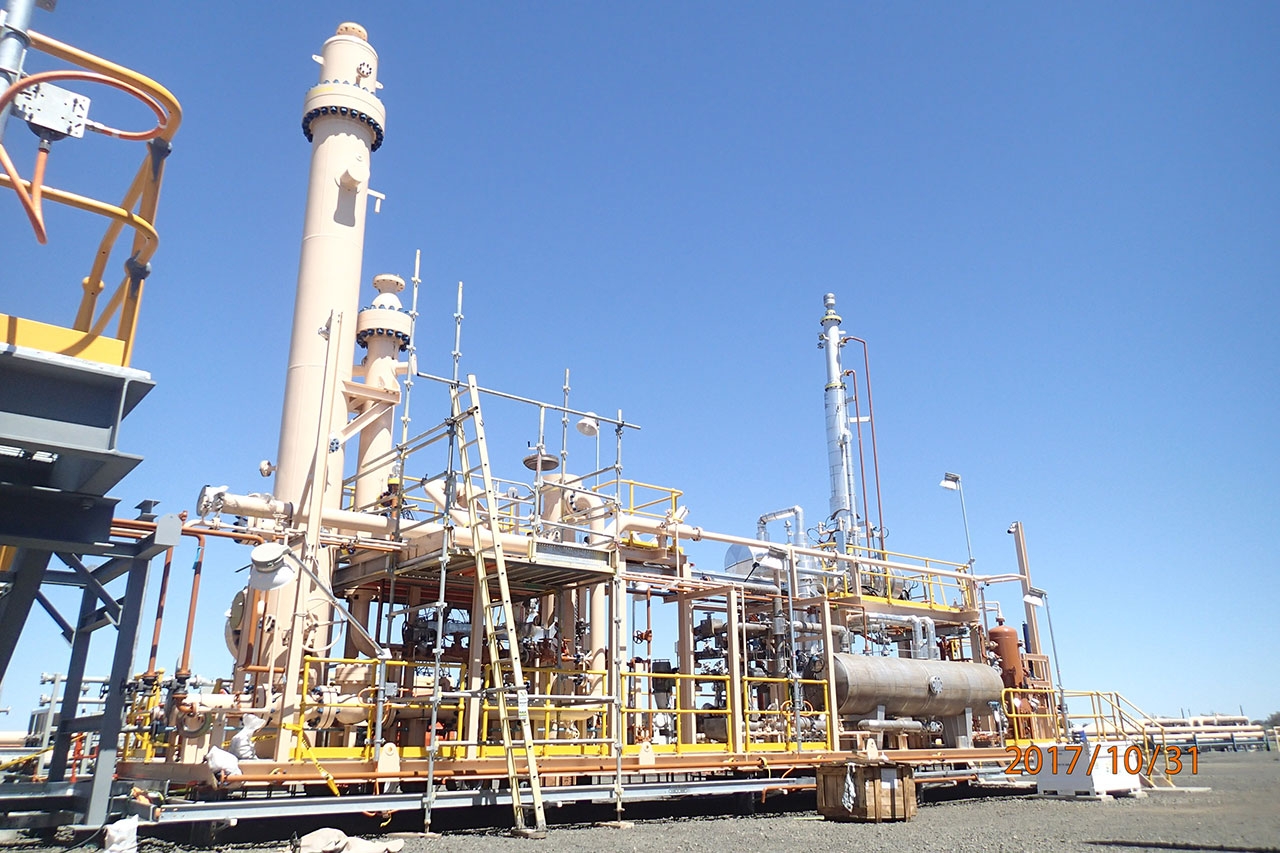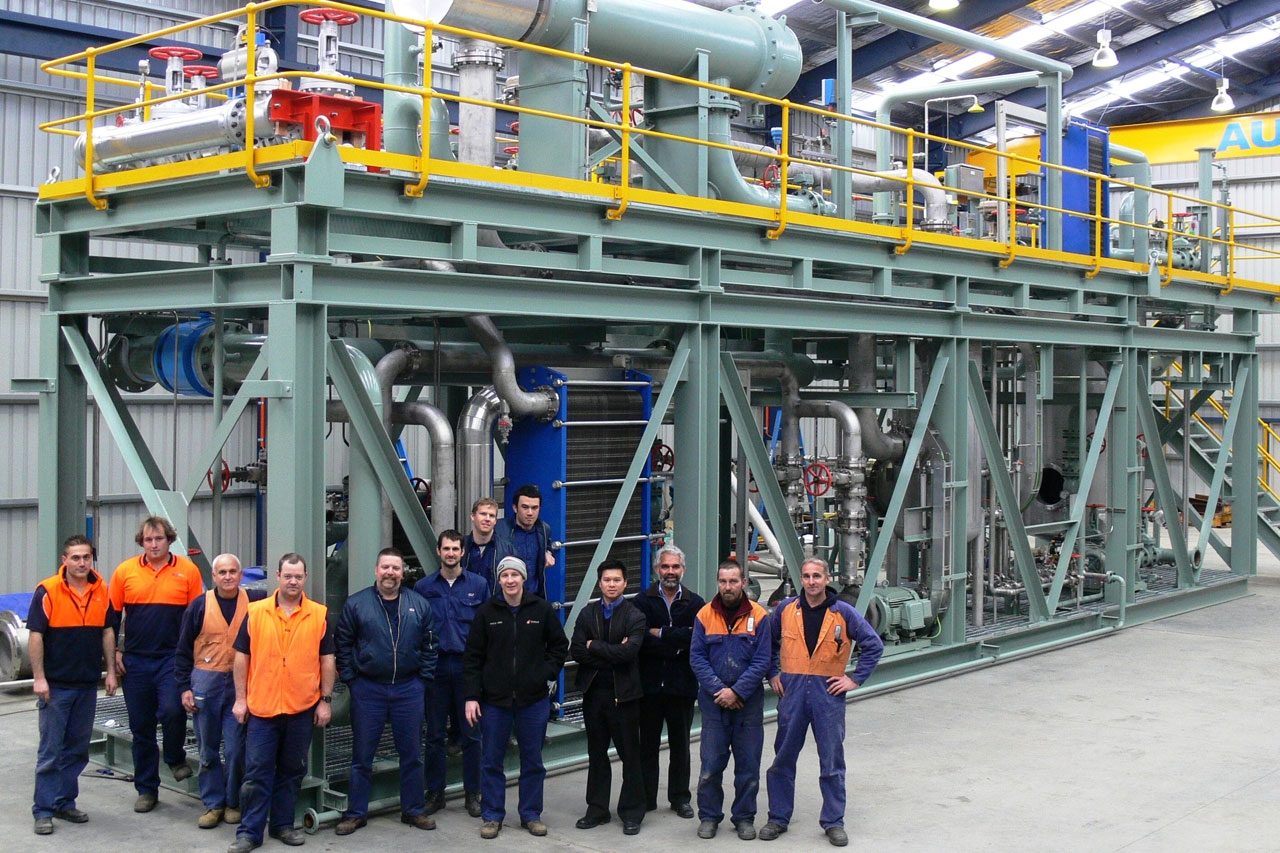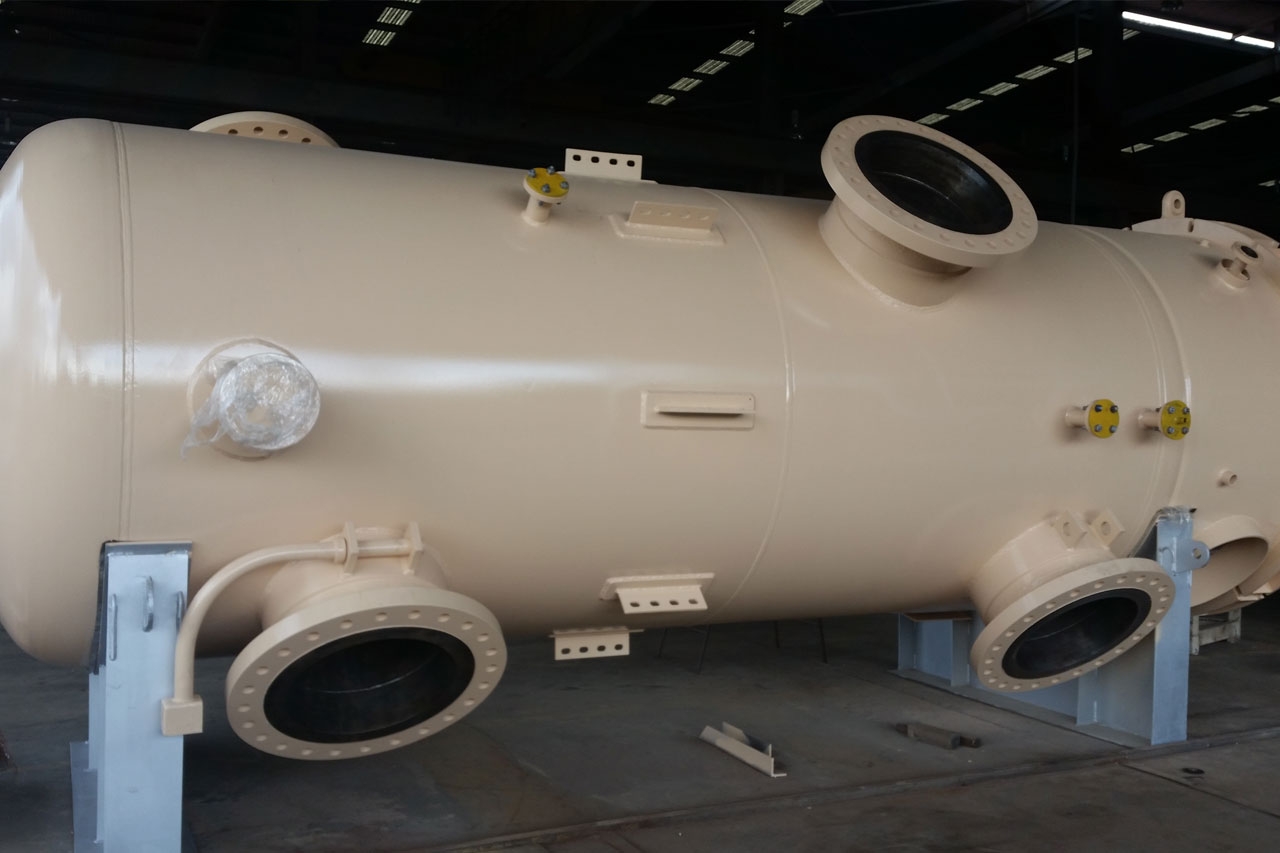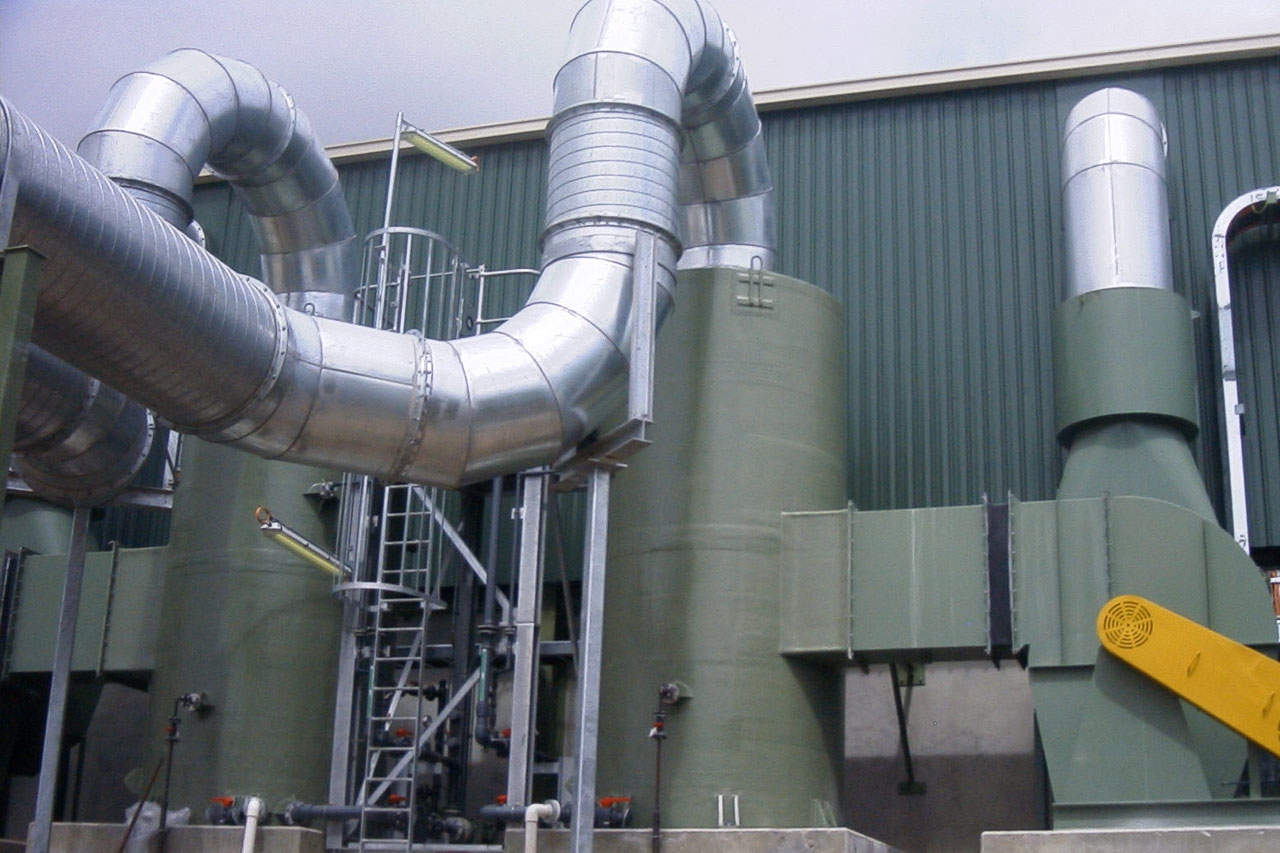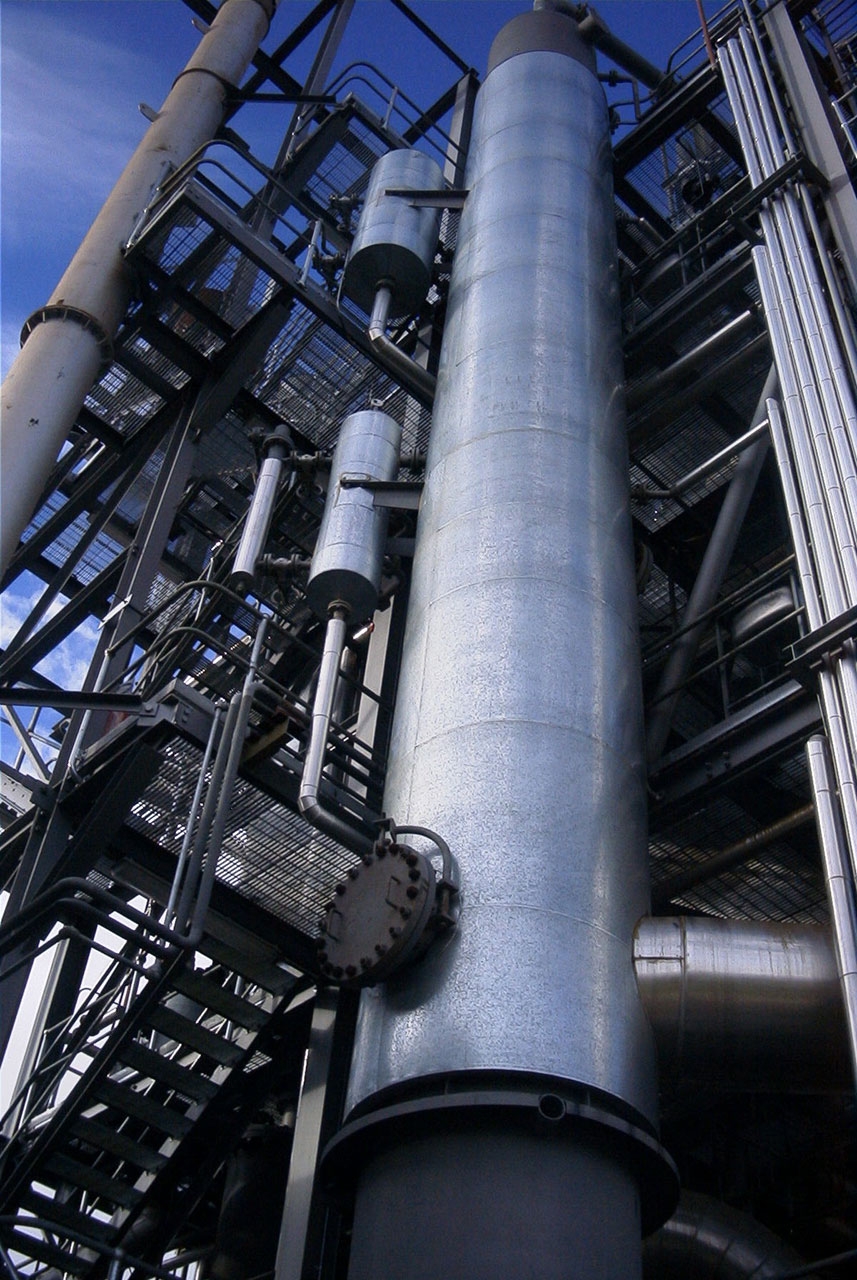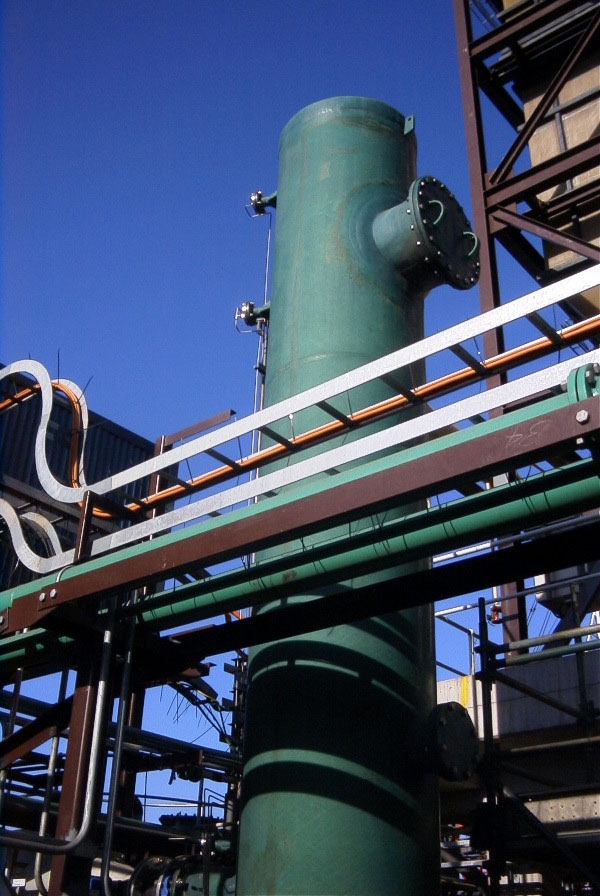GLP has significant experience in offering innovative process solutions for Natural Gas and Coal Seam Gas processing using state of the art licensed technology.
Natural Gas & Coal Seam Gas Processing
GLP has significant experience with process equipment for refining industries including:
- Packed or tray distillation column design and revamps
- Gas scrubbing equipment
- Cyclone separators
- Chloride and Sulphur trap design and revamps
- Tail gas treatment units
- Caustic and wash water unit design and troubleshooting
Gas Dehydration
Gas Dehydration (MEG/TEG)
Absorption using glycol is the most popular method of removing moisture from natural gas. Glycol’s popularity is due to it being very effective, cheap, readily available, easy to regenerate and gives low vapour losses. It remains the most economic choice for most gas dehydration needs, and it is a well-proven technology requiring minimum maintenance.
Glycol plants are mechanically simple but it is essential that careful attention to detail is followed to create a reliable design that even though the plant may appear simple, design and fabrication is a job for specialists.
GLP are those specialists. We have the expertise and know-how to not only provide conceptual advice and design services to meet exacting needs, but can also provide a total, turnkey skid solution including the fabrication, installation and full commissioning of the glycol package.
Gas Dehydration (Molecular Sieve)
GLP is uniquely positioned to assist with all your gas dehydration requirements. Molecular sieves are commonly used to dry gas to very low dew points, typically -100°C or <0.1 ppmv.
Molecular sieve adsorbents are crystalline alumino-silicates which with their unique structure allows the water of crystallization to be removed, leaving a porous crystalline structure and aided by strong ionic forces caused by the presence of cations such as sodium, calcium and potassium, the molecular sieve will adsorb a considerable amount of water or other fluids. If the fluid to be adsorbed is a polar compound, it can be adsorbed with high loadings even at very low concentrations.
Another feature of molecular sieve adsorbent is its ability to separate gases or liquids by molecular size. The pore or "cage" openings are of the same size as many molecules. In the case of hydrocarbon paraffins, the normal, straight chained molecules can fit into the pores and be adsorbed while the branched chain molecules cannot enter the pores and pass by the molecular sieve adsorbents unabsorbed.
GLP has extensive experience with conceptual design, fabrication, installation and commissioning of molecular sieve plants using both temperature swing adsorption (TSA) and pressure swing adsorption (PSA). We are also happy to undertake studies and reviews of existing equipment to ensure its optimal efficiency and meet your process requirements.
Gas Sweetening
The gas sweetening process uses amine solution to remove the hydrogen sulphide (sour gas) and also carbon dioxide (acid gas). GLP has the required capability and experience to design, build, install and commission gas sweetening systems for both CO2 and H2S removal.
The acid gases are contacted with a lean amine solution in a counter-current absorber where the H2S and CO2 are absorbed into the amine solution. The resulting gas leaving the absorber is free of those compounds and released as a sweet gas. The amine solution, rich with H2S and CO2, is heated in a stripping column to liberate H2S and CO2 from the solution before being pumped back into the absorber. The acid gas leaving the top of the stripper column is mostly H2S and CO2 and can be processed or disposed of as required.
GLP supplies gas sweetening systems to:
- Petroleum refineries
- Gas processing plants
- Petrochemical plants
- CO2 purification plants
Gas / Liquid Separation
2-Phase & 3-Phase Separators
GLP uses licensed technology for custom design and optimisation of 2-phase and 3-phase separators equipped with a wide variety of high-performance internals such as:
- Inlet devices (multi-vane, inlet cyclone, inlet deflector)
- Liquid-liquid coalescers (plate type, stokes type)
- Mist Eliminators (chevron, mesh type, axial flow cyclones)
- Multi Cyclones (removal of solid and liquids from gas)
- Sand Jet System (multispray nozzles, torr-jet type)
GLP provides CFD modelling design and hydraulic calculations for vessel and internals as part of our ongoing service to our clients.
Gas Scrubbing
Over the last 25 years, GLP has designed and built various gas scrubbers and scrubbing systems for specific applications, providing solutions to the most challenging problems.
GLP engineers are experts in applying the principles of mass transfer to provide efficient, cost effective scrubbing solutions to meet the most stringent emission control requirements.
Typical components removed through gas scrubbing include sulphur compounds, amines, ammonia, chlorine, NOx, particulates and volatile organic compounds (VOCs). Once the components for removal are identified, GLP will recommend the required scrubbing technology and corresponding operating conditions to achieve efficient removal. This includes the selection and sizing of the required scrubber internals. GLP specialises in the specification and supply of random and structured packing as well as all types of fixed and proprietary vessel internals.
GLP’s designs include:
- Wet gas scrubbing using the most up-to-date extraction processes
- Gas polishing using dry adsorbents to remove difficult-to-extract pollutants.
- Gas filtration whereby gas is forced through a rigorous emission filtration system
Compliance with latest environmental emission standards is critical to the operation of today’s process plants. GLP employs an innovative and intelligent approach when designing gas cleaning systems to provide customised, efficient and cost-effective scrubbing solutions which meet the most challenging requirements.
Typical GLP gas scrubbing system features include:
- Gas scrubbing vessel complete with internals
- Exhaust fan
- Liquid circulation pump and piping
- Chemical dosing
- Liquid drain and collection
- Exhaust stack
- Valves, instrumentation and controls
- Access ways and ladders
Distillation
GLP has significant experience in the design and optimisation of distillation columns, using both tray and packed bed columns.
Typical applications include:
- Waste ethanol distillation and reconcentration
- Crude oil and hydrocarbon distillation systems
- Atmospheric and vacuum based distillation systems
- Flash point improvement for base oils
- Fractionation of solvents in pharmaceuticals plants
GLP are able to provide complete turnkey distillation equipment packages including replacement internals for existing equipment.
Absorption and Stripping
Absorption and Stripping unit operations are encountered in many industries, and typically utilise a packed bed or tray tower for counter current gas/liquid contact. The contaminant may be in the vapour phase, and is desirable to be absorbed into the liquid phase (absorption), or the case may be the opposite whereby the contaminant is in the liquid phase and needs to be removed into the gas phase (stripping).
Typical applications include:
- Acid gas (H2S, CO2, H2SO4, HNO3) absorption
- Stripping of SO2, NH3 or H2S in sour water treatment systems
- Steam stripping of solvents from wastewater
- Absorption of fumes or reactive gases in order to meet emissions limits
- Chlorine gas emergency scrubbers (wet and dry)
GLP are able to provide complete turnkey absorption and stripping packages including retrofit internals for existing equipment, debottlenecking and studies on new applications.


